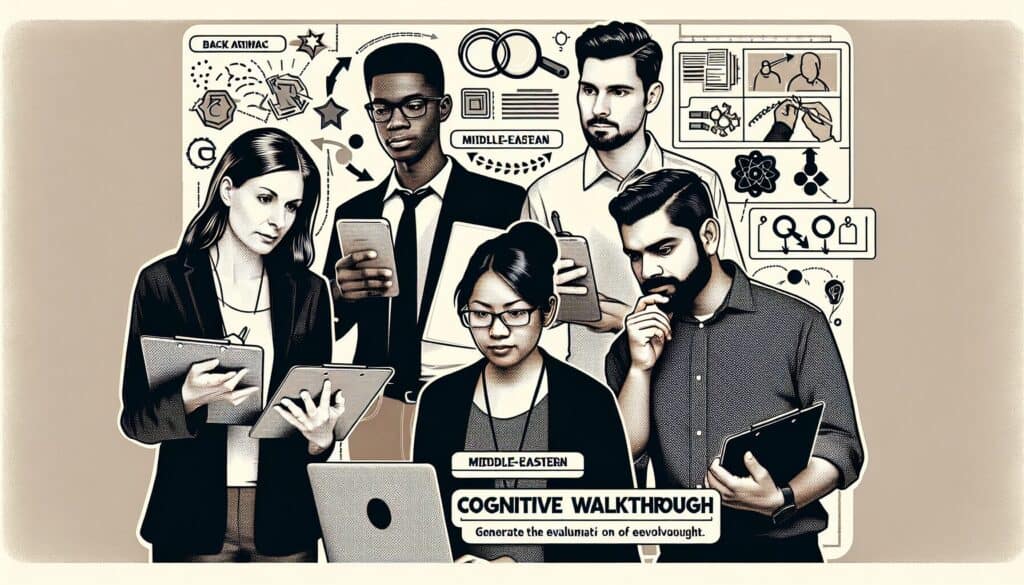评估产品的可用性,让评估人员逐步完成一系列任务,看用户是否能轻松学会如何操作该系统。
- 方法: 工程, 质量
认知演练

- Cognitive Computing, 设计评估, 设计思维, 人机交互, 可用性, 用户体验(UX), 用户界面(UI), 用户测试, 以使用者為中心的設計
认知演练
- Cognitive Computing, 设计评估, 设计思维, 人机交互, 可用性, 用户体验(UX), 用户界面(UI), 用户测试, 以使用者為中心的設計
目标
如何使用
- 评估人员模拟用户在预定任务中每一步解决问题的过程,提出一系列有关可学性和易用性的标准问题。
优点
- 找出与新用户可学性有关的具体可用性问题;成本相对较低,执行较快。
缺点
- 主要关注新手用户和可学习性,可能会忽略有经验用户的问题;有效性取决于评估人员的专业知识。
类别
- 产品设计, 质量
最适合:
- 为试图完成特定任务的新用户找出潜在的可用性问题。
Cognitive Walkthrough is widely employed in the early phases of user interface and experience development, particularly in industries such as software design, web development, and mobile app creation, where understanding how new users will interact with a product can shape its design. This methodology is initiated by usability experts or members of a design team who articulate the specific tasks new users might undertake within the system. Participants typically include the evaluators conducting the walkthrough, as well as team members who can provide insights into user needs and behaviors, such as product managers, user experience designers, and developers responsible for implementation. In executing a Cognitive Walkthrough, evaluators systematically ask a series of predefined questions at each interaction point to assess learnability and ease of use, facilitating a thoughtful examination of the user interface from the perspective of a novice user. This structured approach not only surfaces potential usability issues but also allows for a rapid evaluation process that contributes to iterative design cycles. The findings from this methodology can inform enhancements to product features or user instructions, promoting a more intuitive experience for first-time users. Various organizations, including startups and established corporations, can benefit from integrating Cognitive Walkthrough into their design process, especially when developing new applications or redesigning existing ones that need to accommodate users unfamiliar with the system.
该方法的关键步骤
- Define the user tasks relevant to the product being evaluated.
- Choose specific user goals and scenarios for the walkthrough.
- Step through the task, simulating a new user's interaction with the product.
- At each action required, evaluate if users would know what to do.
- Assess whether users would notice that the correct action is available.
- Determine if users would associate the correct action with the desired outcome.
- Evaluate if users would successfully execute the action to achieve the goal.
专业提示
- Involve a diverse team of evaluators with varying familiarity to ensure a broader perspective on usability challenges.
- Incorporate user feedback iteratively throughout the walkthrough to align scenarios more closely with real-world contexts.
- Utilize task success metrics along with qualitative observations to quantify learnability issues effectively.
历史背景
1986
(如果日期不详或不相关,例如 "流体力学",则对其显著出现的时间作了四舍五入的估计)。

相关文章
蒙特卡罗模拟
基于模型的测试
型号检查
混合方法研究
防错(Poka-Yoke)
任务简介测试